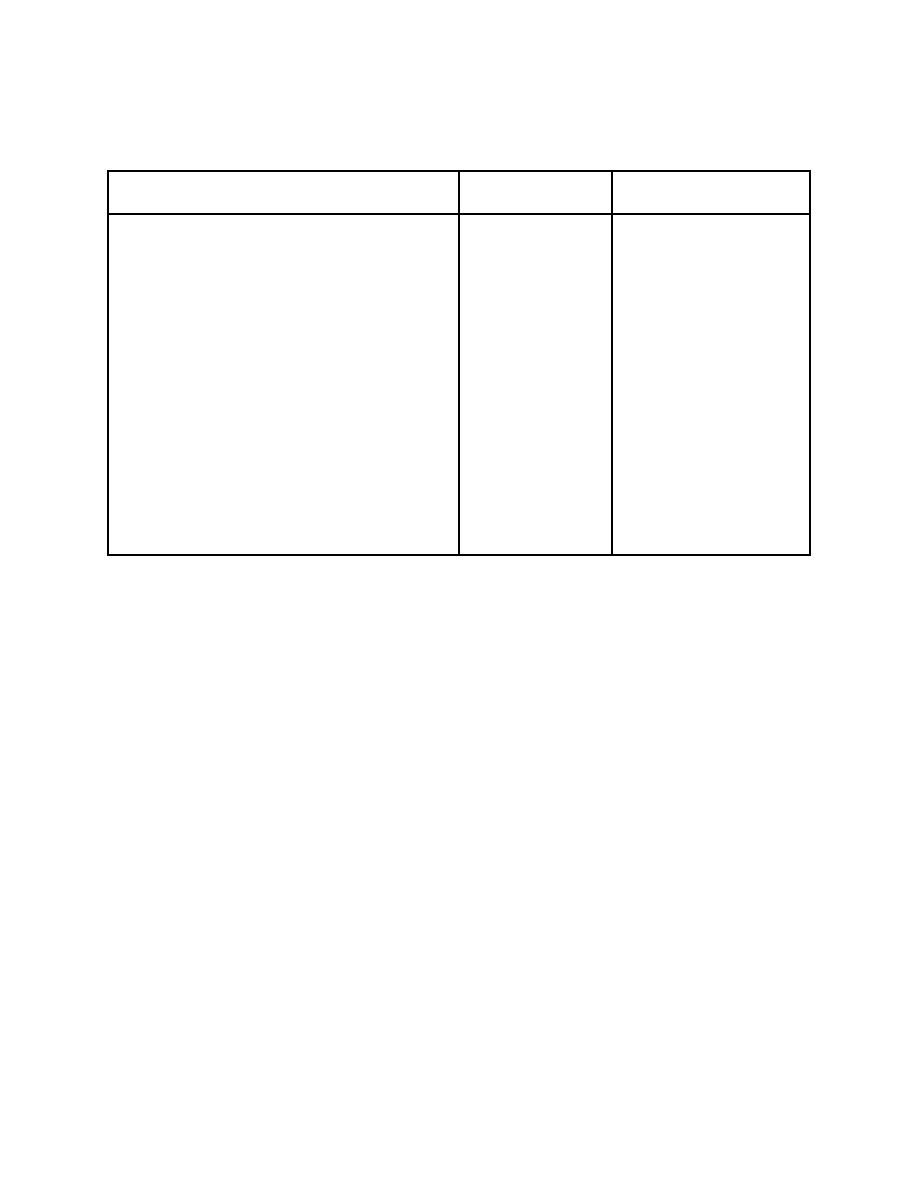
UFC 3-410-04N
25 October 2004
TABLE 3-1. Minimum Volumes and Vacuum Hose Size for Asbestos Operations
Flow rate
Hose Size
m3/s (cfm)
Hand Tool
mm (in.)
38 (1.5)
0.06 (125)
Pneumatic chisel
38 (1.5)
0.07 (150)
Radial wheel grinder
38 (1.5)
0.07 (150)
Cone wheel grinder, 2 inch
51 (2.0)
0.09 (200)
Cup stone grinder, 4 inch
51 (2.0)
0.12 (250)
Cup type brush, 6 inch
38 (1.5)
0.08 (175)
Radial wire brush, 6 inch
38 (1.5)
0.06 (125)
Hand wire brush, 3 x 7 inches
38 (1.5)
0.08 (175)
Rip out knife
38 (1.5)
0.07 (150)
Rip out cast cutter
38 (1.5)
0.07 (150)
Saber saw
38 (1.5)
0.07 (150)
Saw abrasive, 3 inch
51 (2.0)
0.09 (200)
General vacuum
Adapted from: Hoffman Air and Filtration Systems, "Design of Industrial Vacuum Cleaning Systems and
High Velocity, Low Volume Dust Control."
3-5.7.6
Design the air volume for no less than two parts of air to one part of
asbestos to be captured by weight.
3-5.7.7
Design the vacuum hose length less than 7.6 m (25 ft). Locate inlet
valves 9 to 10.7 meters (30 to 35 feet) apart when a 7.6-m (25-ft) length of hose is used.
Locate tool vacuum hose connection on the ends of the workbench underneath the
stands. Size the hose based on: (1) air volume per hose, (2) number of hoses to be
used simultaneously, and (3) air velocity required to convey the material to the
separators.
3-5.7.8
Use single-ply, lightweight thermoplastic or polyvinyl chloride (PVC)
flexible hose, but limit the usage whenever possible.
3-5.7.9
Use a multistage centrifugal blower for the vacuum system. Size the
blower for: (1) total system pressure loss associated with the total number of hoses to
be used simultaneously, and (2) maximum exhaust flow rate entering the inlet of the
blower.
3-5.7.10
Feed the blower directly into the bag house used by the industrial exhaust
system (see Figure 3-5) to minimize the number of asbestos collection points.
3-6



 Previous Page
Previous Page
